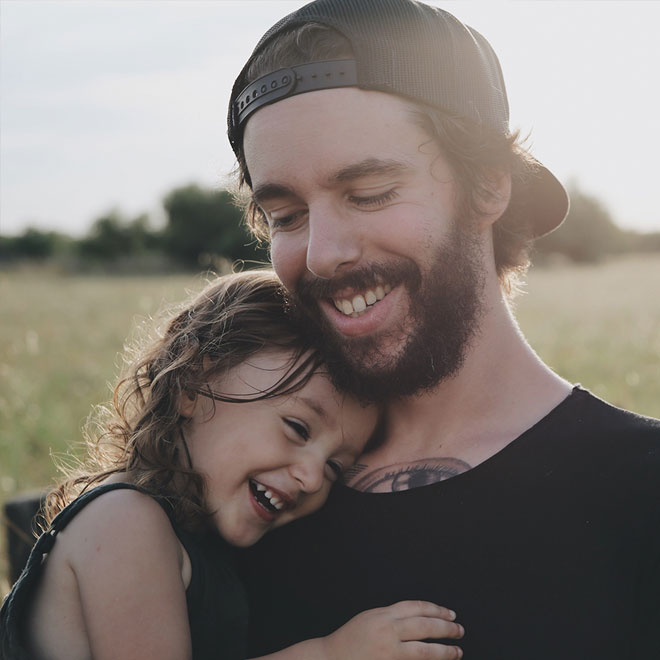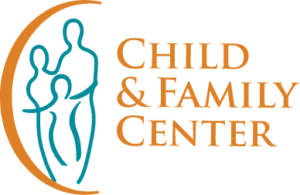DOMESTIC VIOLENCE
Child & Family Center’s Domestic Violence Program provides safety, shelter, and support to survivors of domestic violence while working to break the cycle of abuse and creating healthy relationships. The program is designed to enable an individual to achieve physical and emotional safety and heal relationships. Services are based on a client-centered trauma informed approach to the planning, delivery, and evaluation of all client services.

Crisis Shelter
We provide linkages to crisis shelters for victims of domestic violence.
Community Crisis Response
Our staff intervenes with an individual in crisis to help restore balance and reduce the effects of their crisis. In addition, they work closely with law enforcement and local hospital emergency rooms, medical clinics and/or offices within the service area to establish and/or maintain a plan for the treatment and assistance of domestic violence survivors.
Advocacy
Advocacy for domestic violence survivors when necessary to intervene on their behalf with the criminal justice system and social services agencies. Assistance with Temporary Restraining Orders and court accompaniment, by an advocate, to criminal and/or civil court hearings.
Education Classes
Our specially trained and certified counselors help survivors through emotional support, safety planning, case management services, and advocacy within medical, court, child welfare and other systems of care. Participants in group counseling offer support to each other, while helping to encourage positive changes and self- sufficiency.
Individual and Group Counseling
Court-approved 16-week classes:
Domestic Violence Education focuses on the dynamics of domestic violence with topics including what is domestic violence, red flags, why victims stay, and the effects of domestic violence on children.
Active Parenting provides education on non- violent parenting interventions for children throughout all developmental ages 0-17. Topics include the effects of domestic violence on children, positive discipline and communication skills.
Healthy Relationships is a 12 week course on promoting healthy boundaries within all relationships, including codependency and how to build relationships that promote safety.
Teen Violence Prevention
Prevention specialists provide education on creating healthy relationships to youth in the community. Topics include power and control, elements of healthy relationships and sexuality, media literacy, sexual harassment, sexual assault, and dating violence.
If you or someone you know is experiencing domestic violence:
What is Domestic Violence
Domestic violence can affect ANYONE of ANY age, race, sexual orientation, religion, or gender. It can happen to any couple, married, living together, or dating. Domestic violence is not limited to physical abuse, such as punching, shoving, tripping, slapping, or biting. Domestic violence and dating violence can take the form of emotional abuse, verbal abuse, financial abuse, sexual abuse, economic abuse, threats and even intimidation. If your partner is making you feel afraid, often insults or humiliates you, has hit, kicked, or punched you (or threatened to), keeps you from seeing your loved ones or pursuing your interests, blames you excessively or gets angry often, you may be in an abusive relationship. If you are still unsure, please contact us to speak to an advocate who can assess your situation further.

LEAVING AN ABUSIVE RELATIONSHIP
Devise a Safety Plan
To help ensure your safety, and the safety of your children, it is critical that you develop a comprehensive plan prior to leaving an abusive situation. It is similarly crucial to have a plan to increase your safety, and that of your children, for after you leave the abusive situation. The following are steps to consider on both occasions.
Before You Leave
- Make arrangements that, in the event of an emergency, you and your children can stay with someone you trust. Preferably someone that your partner doesn’t know.
- Ask neighbors to call 911 if they hear suspicious noises coming from your home.
- Know important telephone numbers (police, friends, hotline, shelter). If you sense a violent episode is imminent, and it is safe to do so, disable or hide weapons.
- Teach your children to dial 911 in the event of an emergency.
- Practice getting yourself, and your children, out of your home safely. Advise your employer/coworkers to never speak with your abuser without first checking with you, and to never give information about you to anyone.
- Devise a code word to use with your children, family, friends, neighbors, your children’s school officials, your employer, etc. when you need the police.
- Open a savings account, in your name only, at a bank different from where your abuser’s account(s) is.
After You Leave
- Get a restraining order against your abuser and inform family and friends that you have one.
- Inform family, friends, neighbors that you have a restraining order in effect.
- Keep a copy of your restraining order with you at all times and another copy somewhere in your home.
- Give a copy to the local police, your employer and officials at your children’s school.
- Avoid stores, banks, restaurants, theaters, etc. you used to frequent when you were with your partner.
- If your abuser violates the restraining order, call the police.
- Have a backup plan in the event the police does not respond quickly!
- Change your locks and secure your residence.

Create an Escape Kit
It may be impossible for you to return to your home when you leave, so take these items with you.
- Daily Necessities such as medication, cash, clothing, diapers etc.
- Important documents such as birth certificates, social security cards, passports.
- Valuables, jewelry or photos.
Your Legal Rights / Temporary Restraining Order
We can help you obtain a temporary restraining order through the court, which orders the restrained person to stay away from you, your children or other relatives; possess a weapon; move out of your home; follow child custody orders; pay child and spousal support
